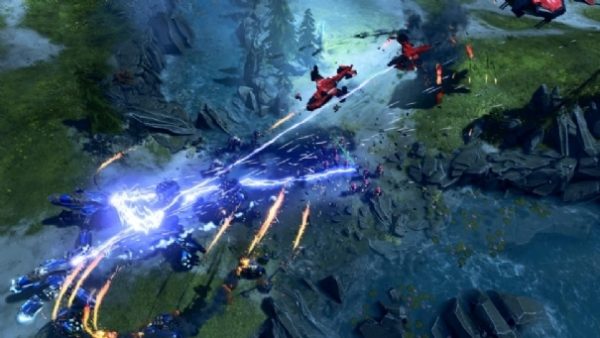When we have completed Tales of Berseria and overwritten the last save to restart it in New Game + mode or resume the checkpoint before the final boss to go explore the inevitable super tough secret dungeon, we practically breathed a sigh of relief. It was a different race: we spent fifty-three hours with a very complicated cast, talking about revenge, death and redemption.
Tales’ characters always leave something inside, even though they are real traveling stereotypes of Japanese animation, but those of Tales of Berseria are truly singular anti-heroes.And the strength of yet another proposal by Bandai Namco is all there: there is a strong will to change course with respect to the past, in this JRPG,
but the limits of the old-gen consoles (and more specifically of PlayStation 3) have really done everything to prevent the Tales’ new vision to emerge and give the brand the evolutionary momentum that it absolutely needs now. In the following lines we will explain our point of view better: fasten your seatbelts.
Tales of Berseria is one of the best exponents of the saga, but feels the weight of the old generation
THE SUICIDE TEAM
In our previous test of a few weeks ago we told you how the story of Tales of Berseria begins, but if you have seen any trailer (or the Velvet episodes in the animated series Tales of Zestiria the X) you probably already know enough. In any case,
it is worth mentioning that Tales of Berseria has a woman for a protagonist, for once, even if she is not really human: Velvet Crowe turned into a demon when her brother-in-law Artorius murdered her brother before her eyes, in a ritual that gave him enormous powers and gave every human being the ability to see the malak, the spirits that usually roam invisibly around us.
The goal of Artorius was to stem the demonite, the same “disease” that transformed Velvet, and to fortify the order of the Exorcists who now, thanks to the contribution of the bound malaks, can better defend humanity. The reasons for Artorius for Velvet do not count for anything: she only wants to avenge her little brother Laphicet and the story of Tales of Berseria
plays constantly on the conflict between logic and emotions, between the higher good and the desires of individuals. Velvet Crowe is an almost intolerable character for a good half of the adventure; forget the usual incurable optimists that the Tales have as protagonists, because Velvet literally reminds us every two minutes of being willing to sacrifice everything and everyone in order to achieve its purpose,and that is to kill Artorius.
You can not say that the supporting actors who join his cause have more noble goals, because even the swordsman Rokurou is a bloodthirsty demon, Eizen is a cursed pirate looking for the missing captain, Magilou … well, she wants just mess up. In this quartet of misfits they fit together in spite of two more positive characters: a small malak that Velvet will call as his brother and who will learn to live of his own will and a disillusioned Exorcist
who will join the group first as hostage and then as a voice of conscience . Essentially Velvet will chase Artorius and his minions around the world, leaving behind a trail of destruction that will boast the nickname of “Dominus of the Catastrophe”:Tales of Berseria, in fact, is set about a thousand years before Tales of Zestiria and goes to fill those little holes in the narration of the other Tales
that gave certain characters and events a true aura of mystery. Bandai Namco has only partially succeeded in the prequel move, but in any case Tales of Berseria is extremely enjoyable in itself and the references to the contrary maintain a perfect autonomy.
The story, however, is expressed in a very direct way, despite the very complex subtext to be digested: Velvet and his cronies are multifaceted anti-heroes with immoral purposes, but the cause for which Artorius is fighting is as ambiguous as theirs. In the end, when everything becomes clearer, it’s hard to say who the villains really are.
Tales of Berseria offers an interesting food for thought, even if we have not digested the idea that a murderer should be esteemed for his total dedication to a homicidal cause.
As we said,It is an adult and complex story that launches real punches in the stomach and makes the character evolution of some characters – Velvet in the first place – even more convincing. Despite this, there are plenty of gags and funny scenes, carefully dosed and integrated into the narrative especially through the system of optional dialogues in order to
lighten the most dramatic moments without weakening their impact: it is a pity, in this sense, that some dialogues – despite the excellent adaptation in Italian – we have appeared really too long.
Often the cast stops mulling over the development of the plot with long explanations on the rules of nature and magic in the world that break the rhythm and confuse ideas, revolving around some key concepts to build ad hoc twists.



